|
Every year at the end of hop harvesting season (a.k.a. the end of summer), many breweries celebrate by brewing up a beer with fresh, wet hops. Fresh hops are less concentrated than dried hops traditionally used when brewing and provide a distinctive “grassy and green” flavor profile.
This year, to celebrate the end of the harvest, we used 23 pounds of Vista hops from our buddies at Crooked Yard Hops in Bozeman to create a unique brew on our one barrel pilot system. These hops lent a tropical papaya flavor that balanced out grassy aromas, leading to a crisp, refreshing drink. The fresh hop characteristics really shine through in this brew. Named Yes, Chef! This brew came out the last weekend The Springs was open this summer. If you weren’t able to try it then, we saved some aside for Montana Fresh Hop Festival Oct. 14 at the Gallatin County Fairgrounds. Check it out!
0 Comments
Philipsburg Brewing Company is proud to announce the latest in their baby brew series— Grown Ass Kölsch: A grown ass beer for grown ass folks. This Kölsch is crisp, with a dry finish, lemony aroma and doughy flavors. Band members of the Grown Ass Men got a run down of the whole brewing process, taking turns pouring, stirring and waiting for each component to work its magic. Brewer Brandon explained the malting and milling process for the grains, which will convert from starches to sugars during the lautering, sparging and boiling. Milled grain, water, hops and other flavorings, such as oats and chocolate for a dark stout, are boiled, then cooled. For the Grown Ass Beer, the brewers experimented with a longer boil than usual, using 100% Hallertau Mittelfrüh hops, which helped introduce new flavors to the final beer. For the fermentation stage, yeast is added, which utilizes the sugars created during the mash. Kölsch yeast was used for this brew, lending a nice doughy flavor. In the end, the beer is light, refreshing and highly drinkable. It might even make you move and groove like you’re listening to one of Ben and The Grown Ass Men’s fine country tunes. It will be released on Saturday, Aug. 5 at the Brewery’s Springs location, at 106 Brewery Rd. The Grown Ass Men will mark the occasion with a rockin’ good time from 5-8 p.m. It's the unofficial start of summer and for us that means time in the sunshine, cold beer in hand, and food on the grill. Whether you're enjoying our beer a block away from the taproom, or miles away in the mountains, we hope you can use this guide to pair up our packaged beers with your favorite cookout foods!
Cheers to summertime! Join Head Brewer Mike Elliot to taste three of our latest batch of British-style beers. As the seasons rotate, so do our beer selections, and often when we get certain strains of yeast in, we like to make a selection of beers with that particular yeast, to showcase different flavor profiles and styles. Today, we’re featuring Snugglepup, Best of Times and Dog Town. Snugglepup is our Dark Mild, at 3.4% and 12 IBUs. This style is characterized by low alcohol, low malt character and low hoppiness. Snugglepup has a muted graham character aroma, with a touch of roast. The English yeast we use lends a subtle fruity flavor that plays well with the bready quality in the malt. Our special bitter Best of Times is middle of the road— medium hop character, medium body. With a deep golden color, this has a stronger fruity floral overtones. The malt is still restrained, with more character though than typical American styles. Mike calls it simple, but still has depth and is very drinkable. Best of Times comes in at 4.8% and 25 IBUs. Dog Town, our London Porter is more delicate than their American cousins. This has a similar ruby tone to Snugglepup, but the malt is more roasted, and comes through more strongly. Dog Town comes in at 5.4% and 18 IBUs. There are notes of toffee and dark chocolate in the aroma, and a fruity character from the English yeast that runs through all the beers in this series. It has a firm coffee and bitter chocolate character. All of these beers are designed to be consumed in higher quantities over long drinking sessions with your mates so they all have a lower alcohol content. Nothing says holiday magic quite like local beer. If you’re stuck wondering what to get the folks you love this Christmas, check out our gift guide for an idea for everyone on your list. Your aunt who always travels south for the winter: A stylin’ Brewery tank top & water bottle so she can stay hydrated. Your favorite uncle: A growler and something neat from Gem Mountain. Your kid’s teacher: A gift card to the brewery and the Sushi Shack, so they can take a night off. The littlest addition to the family: A Brewery buddy stuffed animal. Your best buddies: A round of beer! (One size fits all-- over 21!) Your niece or nephew: Good vibes kids tee & a toy from Heritage Imaging and Embroidery.
Your Brother: A 4-pack, or more, to enjoy around a bonfire. Your Sister: A new sweatshirt from Live Montanably and a few pints for that time she covered for you when you came home late from a party in high school. Your mother-in-law: A Brewery hat with her favorite – Bruce– on it, and a handmade gift from SAJ. Your father-in-law: A metal or wooden sign of his favorite PBC beer. Your beautiful wife: A certificate for a massage from a local spot and a brewery hoodie so she can get cozy when she gets home-- or something from the Sapphire Gallery or Montana Gems if you really want to knock her socks off. Your hardworking husband: A membership to the Best Case Scenario, so his beer fridge is always stocked. Your Mom, who always watches your kiddos: A Brewery ornament and a gift card to the Silver Mill. Your dear old Dad: A Brewery sign for his shop and a gift card to the hardware store.  We’ve rolled out our small batch bottle series again, this time in our alumi-tek bottles. These are only available at the Vault and Springs locations, not through our other distributors, so it’s a great excuse to come down, enjoy a beer, and take a four pack to go. We debuted this year’s run with a favorite— Gonk— which has been a popular beer for a long time, head brewer Mike Elliot explained. Plus, we already had the label ready, which is a bonus. Eventually, new beers will also be introduced in the small batch series, but generally if a beer is popular at the Vault or Springs, we will start to look into putting it into a four pack. For example, Elliot hinted at Love Tractor or Don’t Call Me Honey eventually being introduced in the the series. There’s no definitive timeline for how often new beers will be introduced in the series. It does take a lot of work to get the beer made, transferred, labeled and packaged and the brewery is entering the busy summer season. If you’re a Gonk fan, come on by and pick up a four pack or two to take on your summer adventures, or if you’re not, keep your eyes peeled for our next small batch series release.  While summer weather is still here and there, PBC’s summer tradition of the small batch pilot releases is going strong. This year, we’ve already released 10 new beers up at the Springs via the pilot system, which produces a modest one barrel of beer compared to the 50 barrels of the standard Springs brew. The pilot system allows the brewer to stretch with different ingredients and styles and experiment more, head brewer Mike Elliot explained. They can play with stuff they usually don’t have time or room for in other systems. The pilot system brings more visitors up to the Springs, especially on Friday new release days. Some brews don’t last as long as others, so there is an incentive to get up and try the new brew before it’s gone. They make quite a large variety of beers up there, “and people seem to enjoy it all,” Elliot remarked. The flavors or ideas usually come to the brewers in dreams, he joked, and while there are some hits- like the Juniper Saison that was very intense when first brewed, but has mellowed considerably to a nice balanced brew, there are sometimes misses too. Dark beers, Elliot uses as an example, seem to be cursed. We’ve dumped out five different Porters on the pilot system. But overall the lighter beers tend to go faster. If they’re not too late this year, they’ll likely try to brew the Spruce Tip Ale from last year and there was a blackberry beer people really enjoyed last year too. Love Tractor and Stewart Loch, which have both made it down to the vault, were both pilot system launches. They were enjoyed well enough that they warranted a larger brewing. Last year, company-wide, 110 unique beers were released. This year’s latest releases include a Tangerine Pale Ale, Earth Rocker and an Oatmeal Stout. Lots of breweries have a smaller research and development arm where brewers can get together and develop new recipes. PBC’s pilot system allows for just that, with room for modifications and changes if needed.  It’s that time of year again folks— Girl Scout Cookie season! To celebrate, we’ve curated pairings of our delicious brews to go with these tasty cookies. What’s your favorite Girl Scout Cookie-Beer combo? Rich Tagalongs or Peanut Butter Patties pair wonderfully with cream ales and Vienna lagers, so we recommend our Vorfredue. Chocolatey favorite Thin Mints pair great with stouts and porters so try them with a delicious Corner’s Porter coffee porter. Brownie-inspired, caramel cream-filled Adventurefuls are perfect pairs with our Tramway Rye Pale Ale. Oatmeal-peanut butter Do-Si-Dos cozy up well with lightly hoppy Emotional Rescue IPL or our Don’t Think Twice Kolsch. For a taste of summer, pair the S’mores Girl Scout Cookies with a fruity brew, such as our standby Razzu Raspberry Wheat. The delightful citrus notes of Lemonades and Lemon-Ups mingle beautifully with Hefeweizens and IPAs, and we recommend them with a cool pint of our Haybag Hefe. Sweet toffee bits in the Toffee-Tastic pair with our crisp, hoppy classic Montana 1 IPA. Take it from the experts, and one of them being our very own, Ben Johnson, to tell you how to start to brew from home. We are honored Porch.com reached out to get our brewers expertise and knowledge on home brewing and Ben's answer did not disappoint. Read their blog post here to see what all of the experts had to say on the home brewing process.
Dear Whole Flower Hops,
We love you! We know you can be more expensive and definitely more time consuming to work with but we are willing to look past your minor flaws for the unmatched quality you bring to each and every brew. The benefits will always outweigh the alternative options like pellets and oils. Yes, oils and pellets are more affordable (ahem, cheaper) less messy (read: considered easier), and take up less space (we don’t have a counter-argument to that one). That’s why other brewers love pellets and oils. They seem like a simple choice. But simple and easy isn’t always best. We won’t settle for less than the best, even if some space, time, and money must be compromised. Ah yes, like all good fairy tales, compromises are made for unconditional love. Because you, whole flower hops, are in your truest form (aside from being fresh/wet hops), we find we get the best expression of each hop variety. When you are left alone after blooming and not converted into an oil or a pellet, we see the best potential for a truly quality brew. Isn’t that one of the deepest desires of human and plant: to remain in their most original, true form? We could go on forever but just know this: for the last seven, nearly eight years, we’ve been committed to you, whole flower hops, in every single beer we make. We choose you, we continue to choose you; every single day, for the rest of our brews. We even printed it on all of our packaging, so we really hope you feel the same way… Love, PBC Philipsburg Brewing Company opened its doors where boring beer ruled the land--ranchers, forestry workers, shop keepers, teachers, and everyone in between exclusively sipped suds shipped from the far corners of the country and owned by big corporations. You know, those watery concoctions that have been around for over a hundred years, the stuff the craft brewing industry calls “yellow beer” as a not-so-loving nod to their uninteresting approach to beer (if you can even consider this stuff beer!) ––and frequently consumed from a can reading Coors, Bud, or Miller. Hey, there’s certainly a time and place for those beers, but our taproom isn’t one of them. A key difference between craft beer and the “traditional” American beers referred to above is the super wide variety of styles. Most craft brewers take the basic ingredients––water, yeast, malt barley, and hops––and experiment with adding herbs, spices, fruits, or whatever, or even testing new production techniques. So, yes, aside from the delicious smorgasboard of flavors, aromas, and textures to choose from, the superiority of craft beer also lies in the way it’s made. Brewers actually go to school to study this ancient trade, and more and more colleges are launching beer brewing degree programs. Mike Elliott, Head Brewer at PBC, attended Oregon State University’s Fermentation Science program and Ben Johnson, Lead Brewer and Recipe Developer, completed Siebel Institute of Technology’s Concise Course in Brewing Technology. These days, we’re in good company when it comes to Montana craft breweries, yet we’ve also managed to stand out in some pretty interesting ways. Here’s just a taste. Adventurous and Approachable We brew with purpose. Ben chooses styles to brew based on many things but that doesn’t include what’s trendy––in the rest of the state, country, or world. *GASP* No Hazy IPA?! Nope, not one around here. That doesn’t mean we brew just for beer snobs. Developing approachable styles that locals can get behind is fundamental to Mike and Ben’s brewing philosophy. Some of our brews are lost styles that are hard to find in a taproom country-wide; they aren’t the hoppiest or boldest in the land, yet still rich with history and full of character. Case in point: There and Back Again Dark Mild is a taproom favorite that clocks in at 3.9% (session beer, anyone?) and is a rich mahogany color that has a slight maltiness and zero hop aroma and flavor. It’s a real mind-bender for the hop heads out there but anyone who likes beer and has an open mind will appreciate it. (By the way, cheers to the Tolkien family. We’re fans––hence the name––and we’re sorry for your loss.) Of course, we don’t always build on historic styles. Oftentimes we start from scratch. Exhibit A: 5 Phantoms Pumpkin Spice Barley Wine is pretty damn unique. It’s brewed with real, locally-grown gourds and pumpkins, and Ben hand-grinds the vanilla bean, cloves, ginger, and other spices (we can’t share all our award-winning secrets). Can you really say you’ve had something like it? Hoptions Did you know that we use whole-flower hops in all of our brews? The only other brewery that we know does that for sure, like 100% for sure, is Sierra Nevada. The alternative approach is hop pellets or oils, which work fine… But we find that the finished product aroma and flavor is much more predictable (and super tasty) with dried, whole-flower hops. We also appreciate their more natural, unprocessed form. So why would most breweries use pellets and oils, you ask? Great question. Using whole-flower hops is more time consuming in the brewing and cleaning process, it’s less cost-effective (modified hops like pellets are cheaper), and the hops take up more space in the coolers. We think the benefit to the final product is well worth the extra time and expense. Montana 1 IPA and Tramway Rye Pale Ale, two of our hoppiest of brews, just wouldn’t be the same without those beautiful blooms. H2Know Before water chemistry was well understood, regional beer styles evolved to suit an area's underlying water characteristics. In Dublin, for example, brewers found the highly alkaline, calcium-laden water could balance the acidity of roasted barley, so the resulting Irish stout was full and sweet rather than thin and astringent. Similarly, the sulphate-rich waters of Burton-on-Trent in England helped to give hop-derived bitterness a refined, smooth character and eventually led to the development of hop-forward IPA. Philipsburg's municipal water supply is a unique combination of two sources; the pure, nearly mineral-free alpine water of Fred Burr Lake is blended with ancient artesian mineral-laden water from Silver Spring. The 3:1 lake-to-spring water ratio yields a lightly mineralized, slightly alkaline brewing liquor that is easy for our brewers to manipulate with mineral additions in order to achieve the desired levels of calcium, sulphate, chloride, and residual alkalinity, each of which helps lend individual character to every beer we create. For example, in our Badfinger Imperial Stout, the raw water is insufficiently alkaline to balance the large amounts of highly roasted malt, which is quite acidic. To counter the acidity we add calcium carbonate, commonly known as chalk, and we use calcium chloride to accentuate the richness of Munich and Vienna malts. “Water is a brewer's most fundamental and precious resource, yet is often misunderstood or simply overlooked when writing recipes or building breweries,” according to Mike. We consider ourselves mighty lucky to have both perfect brewing water and brewers who are dedicated to understanding how to best use it. During his time at Oregon State University, a quarter of Mike’s curriculum and coursework was dedicated to water chemistry. This taught him to develop his recipes by calculating residual alkalinity and researching what other brewers have done with similar styles to achieve the best results with the water supply he is brewing with. For instance, when building IPA recipes, the conventional wisdom is to have elevated sulphate levels in order to accentuate hop bitterness (we did this in our Tramway Rye Pale Ale), but in the modern juicy IPA trend, some pioneering brewers advocate drastically increasing chloride additions in order to give the beer a full, soft mouthfeel and sort of underplay the bitterness of the hops. This is the approach we took in our Montana 1 IPA. Our brewers never tire of unveiling new creations. Last year at the Vault we brewed 20 different beers (70% staple brews, 30% specialty) totaling 72 batches, which translates to over 156,000 pints! We’re serving 10 in the taproom now, and plans are under way for the first new brew of the year. Now hop on that New Beers Resolution! (If you aren’t already on the bandwagon, get in on the New Year, New Beer challenge here.) We weren’t messing around when we said some of Montana’s top chefs will be judging your Craft Kitchen entries. This week, five of Montana’s most celebrated culinary artists gathered to taste your submissions. Read on to learn more about the pros behind the picks. Our Philipsburg fans are certainly aware of the world-renowned Ranch at Rock Creek we’re lucky to call a neighbor. The Ranch was the world’s first Forbes Travel Guide Five-Star Guest Ranch, and one of its World’s Best Hotel Bars. We like to think that’s in some part due to their top-notch local beer selection, best enjoyed saddled up to their Silver Dollar Saloon bar—and we mean that quite literally. At the Ranch at Rock Creek, Executive Chef Josh Drage has created what Forbes calls a locavore’s paradise, where he marries “mountain tradition with modern palate” in designing his daily menus. Growing up in a small cabin in Anchorage, Alaska, Drage began cooking with his mother at 12 years old. He eventually pursued a career in the culinary industry and completed his formal training at Scottsdale Culinary Institute. From there he gained experience at restaurants in the West before finding his way to the Ranch at Rock Creek the year of its inception. Chef Sunny Jin's formative cooking skills developed at the Western Culinary Institute in Portland, Oregon, where he won the coveted Grand Toque Award as the top culinary student. Since then he has cooked for some of the world's finest restaurants—Napa Valley’s French Laundry, Catalonia’s El Bulli, and Australia’s Tetsuya’s. Jin says he really earned his cooking chops at French Laundry, where he spent three years working under renowned chefs Thomas Keller and Corey Lee, creating new menus every day. As the executive chef at the Resort at Paws Up, Jin serves "rustic ranch cuisine" and favors local ingredients—from huckleberries, cherries, and wild chamomile to elk, bison, and trout. (We hear the huckleberry pancakes are something else. Yum.) Chef Caroline Doern's passion for food spans 17 years, seven of which were spent running a personal chef and catering company. That company led to opportunities to craft dining experiences throughout the country, and also to work with Steve Kuntz, with whom she would eventually open Feast Bistro in Bozeman. At Feast, sharing exceptional cuisine and inviting guests to participate in an epicurean dining experience is a driving force. Proudly serving sustainable seafood and locally sourced meats and produce, Doern says she considers Feast a platform to “share her passion for simply prepared and superbly executed cuisine.” In 2018, USA Today named Doern the best female chef in Montana. Mike Elliott has been making beer professionally since 2007. He enrolled at Oregon State University in 2002, hoping to become an engineer, but advanced calculus convinced him to seek an alternate career path. Luckily, OSU offers a degree in Brewing Science through the Food Science and Technology department, and Mike found the combination of science, art, and community a perfect fit. Mike learned to cook in college as a line cook in a busy pub on the edge of campus, and credits his hard-bitten Chicago-born boss with instilling a sense of confidence and purpose in his kitchen endeavors and the rest of his work. While he doesn't consider himself a "foodie," Mike appreciates quality, straightforward food prepared with care and conscience. He has been known to weep openly over good steak. After brewing in Portland and Missoula, Mike was fortunate to meet the owners of Philipsburg Brewing Company just as they were beginning their search for a brewer to get their project up and running. In just a few months the downtown brewery went from an empty shell of a building to a vibrant and beautiful craft brewery and tasting room. The most striking feature of the original brewery is the intimacy beer drinkers have with the brewing process, people, and equipment. The ability for the brewers and drinkers to interact on a personal level makes both working and imbibing at Philipsburg Brewing a memorable experience. Beer and food go hand-in-hand for Mike, though usually as a complement to the process rather than an ingredient--why pour that delicious beer into a pot when one could pour it directly into a pot belly? An exciting development of the craft beer movement is pairing good food and quality beer in the same way wine pairings work, and Mike has been continually pleased and surprised at the creativity and thoughtfulness chefs put into making this everyday beverage shine in the kitchen. Ben started brewing on accident, really. He and a buddy were “sitting around looking for something to do” when Ben decided he wanted to learn how to pickle stuff. Lucky for us, it was March so there was nothing to pickle. That is how Ben attempted his first homebrew. This all happened while Ben was still employed in the financial industry. He has a bachelor’s degree in Economics and an MBA from UNC Chapel Hill. He left finance because his passion for home brewing had reached its maximum potential and he knew he was on to something. He quit his job and enrolled at Siebel Institute’s Concise Course in Brewing Technology. After his course was complete, he was living out of his car for the better part of 2013 and volunteer brewing at some big name joints. He was at a final round of interviewing with a nationally recognized craft brewery when PBC co-owner Cathy called him up. While recalling the events, Ben said, “I thought, ‘These are just nice people, so I should go see them.'” Ben started with Philipsburg Brewing Company in May 2014 and we couldn’t be more proud to have him. When Ben isn’t making beer, he’s reading about making beer, talking about making beer, kayaking, cooking, or camping. You can also find him teaching Beer School at the Vault, every first Monday through April. The gigantic, beer-soaked, not-a-costume-party party called Oktoberfest just came to an end in Munich, but we beer-loving Americans are still striving to emulate the cool kids across the pond. The Brewery has a history of drawing Oktoberfest out a bit longer (like, two or three weeks… what?), and this year we leveled up with the strategically timed bottle release of our award-winning Vienna lager, Vorfreude. At least here at The Vault, Oktoberfest and Vorfreude go together like wurst and kraut. Now, the smart kids will note that Vienna is not a German city, but an Austrian one, and that Oktoberfest beer is golden and light, not an amber lager like Vorfreude. Which might lead one to wonder, is this just a lame attempt at piggybacking Oktoberfest to promote our newest release? It most certainly is not. Amber lagers have always been an autumn seasonal standard, but the Vienna amber lager does have deep roots in the history of Oktoberfest. It’s one of several styles of beer associated with the centuries-old celebration, and that’s where things get confusing. Here’s why you should say "Prost!" with a Vienna lager in hand this year. Beer styles can often be traced back to specific countries or regions that influenced the development of the beer, and European countries have produced strikingly similar styles throughout history. Those that became popular in the 19th century are intricately intertwined and can be downright confusing to differentiate. “Oktoberfest” might be the granddaddy of all beer confusion––both the style and the celebration. Since 1818, the first year beer was served at Oktoberfest, at least four different styles of beer have been associated with the event, but there’s only one official Oktoberfest style each year. So what is the official Oktoberfest beer? Since 1953 it’s been the light, slightly sweet, golden-colored Festbier. But in the earliest years it was a dark lager (the beginnings of today’s dunkel lager). The dark lager remained the official Oktoberfest beer for more than 50 years, but tastes began to change after Munich’s Spaten brewery introduced a lighter, amber lager in 1841, calling it a modern Märzen. That same year, 250 miles away at Vienna’s Schwechat brewery, a young brewer named Anton Dreher created and released the first Vienna lager (described as a “new Märzen”). He had combined Bavarian lager yeast with a new malt he developed to mimic English pale ales, thereby producing the world’s first pale lager. Dreher’s new malt was created using an English kilning technique that dried the malt in a new way, producing different color and flavor profiles. He had learned the technique during several years spent visiting English and other European breweries, and it was during that time that, coincidentally, he met and became good friends with Gabriel Sedlmayer II of the aforementioned Spaten brewery. Like Dreher, Sedlmayer had also returned home to experiment with the English kilning technique, and he eventually created his own new malt. In 1872, he combined that malt with a lager yeast to turn out a beer very similar in color, aroma, and flavor to Dreher’s wildly popular Vienna lager, and he marketed it as Marzen gebraut nach Wiener Art (“March beer brewed in the Viennese way”). Considering this description (as well as evidence that the term Märzen may have first been used in Vienna), it’s been suggested that Sedlmayer’s Märzen was an imitation of Dreher’s lager with a slightly different malt. The new Spaten lager was a hit and it reigned as the official Oktoberfest beer for nearly a century, while the Vienna lager style slowly faded into obscurity. Vienna lagers saw a resurgence in the 1980s when American craft brewers took interest, but they’re still considered the lesser known cousin to Märzens. Americans like Märzens so much that although Festbier has been the Oktoberfest beer since 1953, Märzen lagers are still what we associate with the festival in the US today. Some German breweries even create “Oktoberfest Märzens” just for the US market. (To further complicate things, there’s also a style called the Austrian Märzen, but it’s quite different than either Vienna lager or German Märzen… A topic for another day.) Vienna lager is the OG, the quiet inspiration for the world-famous Märzen that Americans in particular just can’t quit (and we’re certainly fans as well). Vorfreude Vienna Lager is our celebration of Anton Dreher’s 19th century innovation and the glorious festival of beer it helped shape. We’ve always taken pride in doing things differently, but we also just like rooting for the underdog. This year, skip the usual and bring a pack of Vorfreude to the party. Then wow your fellow guests with a captivating retelling of the story behind the style. Wir gehen dann mal unsere Lederhosen und Dirndl für unsere eigene Oktoberfest-Party vorbereiten. Bis dann!
A keg saved my life today. If you found yourself in Philipsburg, Montana on a particular June day in 1876, you might have heard those words upon an encounter with Mr. Charles Kroger, the celebrated owner of the town’s first brewery (at the same site on which we brew today: the Springs). Mr. Kroger’s brush with death occurred while on the clock, heading home from delivering beer, “that modern essential to comfort,” as the local paper described it in those days (seems not much has changed). As reported in the Helena Weekly Herald’s “Territorial News” section, “C. Kroger, returning from Bear to Philippsburg with an empty beer wagon, came near losing his life while crossing Flint creek. … He lost his team, and barely succeeded in navigating to the shore on an empty beer keg.” Charles Kroger was a bit of a celebrity in Philipsburg (sometimes spelled with two P's at that time); regional newspapers gushed about his business from the day he purchased the land. In 1876 Kroger’s Philipsburg brewery had only been open a year, but the town was growing, attracting more hard-drinking miners without family obligations to keep them in check (women and children were a very rare sight). The “Bear” that the Herald reports Kroger coming from was likely Beartown, the mining camp that he moved to Philipsburg from. Beartown formed in 1865 when gold was struck on Bear Creek, about six miles from the Bearmouth area (by a group clearly lacking in creativity, at least when it came to naming). Beartown was known as “a rowdy, lawless camp that drew prospectors from far and wide” and Kroger likely contributed by running his first brewery there. He shared a house with two other men, one of which was also a brewer. Kroger gained at least five years of brewing experience, while also mining, before meeting his wife and opening the Philipsburg brewery. We like to imagine that Kroger’s wife, Anna, was a beer lover too, encouraging his entrepreneurial spirit. Although they met in Deer Lodge, both Anna and Charles were from Germany after all, where beer is a major part of the culture. It’s understood that the large number of immigrants from strong beer-drinking countries (like Germany) directly contributed to the emergence of America’s beer culture. Incredibly, per capita consumption rose from under four gallons in 1865 to 21 gallons in 1910! Kroger’s Brewery sold beer in both bottles and kegs, and, like most breweries of the time, delivered customer orders on a horse-drawn beer wagon. Kroger was driving his wagon with a lightened load after (presumably) delivering beer to Beartown. And then he lost his horses and almost died in Flint Creek. So few details, so many questions! First of all, we’re told Kroger needed to grasp an empty beer keg to “navigat[e] to the shore” of… Flint Creek?! Locals know Flint Creek as quite narrow, shallow, and slow-moving; it’s tough to imagine it drowning a man. Which tells us Kroger must have been seriously injured if he struggled to get to shore. How might this have happened? Brewery horses had to be well-trained, but like any horse, they could spook and bolt, breaking free of the wagon or bringing it for the ride, ramming people and buildings and throwing contents to the ground. Drivers themselves were thrown as well (or they chose to jump off), causing head injuries and broken legs, ribs, and necks, sometimes even death. This was actually quite a common sight in the nineteenth and early twentieth centuries; newspapers were full of stories of “runaways” and their aftermath.
Now consider that Kroger was not in town, but, instead, alone in the country. Those of you lucky enough to have spent the nineties playing Oregon Trail, think back to those tricky river crossings in which any number of things could go wrong, like the wagon getting stuck in the mud or breaking a wheel—and that was with oxen, which were better behaved than horses. Then consider that many horses have a fear of water, even as small as a puddle. We’ll let you do the math from here, but whatever happened that left Kroger in Flint Creek and his team of horses running wild, he eventually managed to make it back to town to tell the story and keep the beer flowing in “unlimited” quantities. That wasn’t the last of Kroger beer wagon runaways, but likely the most memorable. We say beer wagon drivers were mining town heroes, risking life and limb to supply “that modern essential” to the people. Kroger and company fulfilled that mission ‘til the end, or what surely felt like the end: prohibition. We’re proud to continue his work today, brewing and bottling on the original site, where Kroger’s hoptower stands to this day. One need not be a history buff or student of architecture to appreciate the distinct character of the buildings lining Philipsburg, Montana’s business district and surrounding neighborhoods. If you’re lucky enough to have visited our town, one building in particular has surely caught your eye: the colorful, ornate, and towering Sayrs building at the corner of Broadway and Sansome. Yes, the one with BREWERY inscribed in big gold letters on it’s big glass windows. Call us biased, but we have to say our Sayrs home is Broadway’s architectural champion. Constructed by banker Joseph Hyde and his wife, Mary, in 1888, the Sayrs building was originally known as Hyde Block. It housed First National Bank until the silver crash in 1893, then reopened in 1894. The bank inspired the name of our taproom, as the original vault remains, just to the left of the bar. The Sayrs name graced the building in 1904 when Frank Sayrs bought it, and since then it’s housed a variety of businesses––including a tailor’s shop, drug stores, clothing store, liquor store, and recreation center––until 2012, when a gang of craft beer obsessives moved in with tanks, kegs, and a dog named Bruce. Of course, our building is just one of the architecturally interesting structures in town, many of which are on the National Register of Historic Places. Philipsburg grew rapidly from the start, but it was two decades after settlement began that the most significant buildings were constructed––during the silver mining boom between 1881 and 1893, and again, to a lesser extent, during the early 1900s. Most construction even utilized locally sourced materials, including granite, brick, and wood, long before it was a box to check on your LEED application. Philipsburg is now considered one of Montana’s best-preserved late-nineteenth-century mining towns. We’re so proud of our history that we’re just going to say it: you should make the trip to Philipsburg while the weather’s still gorgeous for an afternoon stroll around town––with an eye on design and a beer in hand. Yep, it’s legal to drink in the streets (one more reason to love Philipsburg!), so the Sayrs building is an obvious first stop. Read on for a quick lesson in architectural vocab to impress your friends when you make that trip, and grab a free Philipsburg Territory at any local business for a historic district map and guide (pages 16-24). Spot these architectural elements on Philipsburg's historic buildings:
Think you’ve got it down? Head into town to test your knowledge or just stare at all the pretty. We’ll be waiting with your pint in the Sayrs building, every day from 10:00 to 8:00.
And one last thing! The stories of the people and businesses that occupied these architectural gems are seriously fascinating but far too numerous to include here. So if you’re itching for more, we highly recommend stopping by our local library, which has a section dedicated to books on Philipsburg history and cheerful librarians to help you browse. As our pal Arthur says, “Having fun isn’t hard when you’ve got a library card!” |


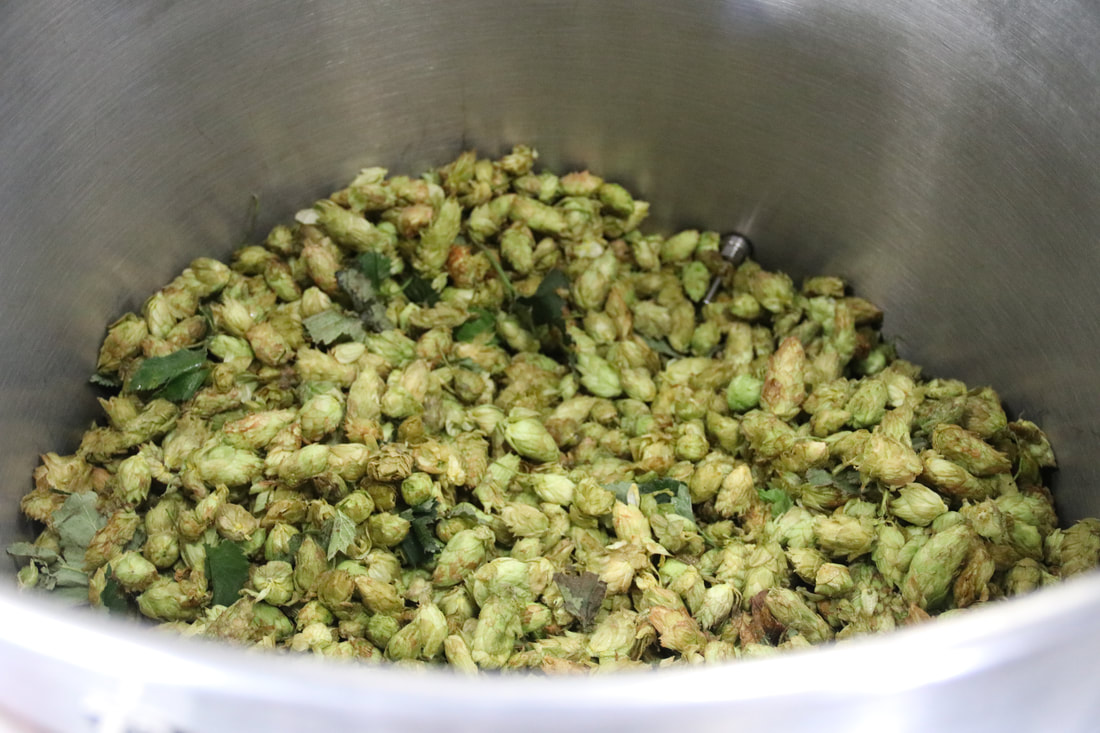
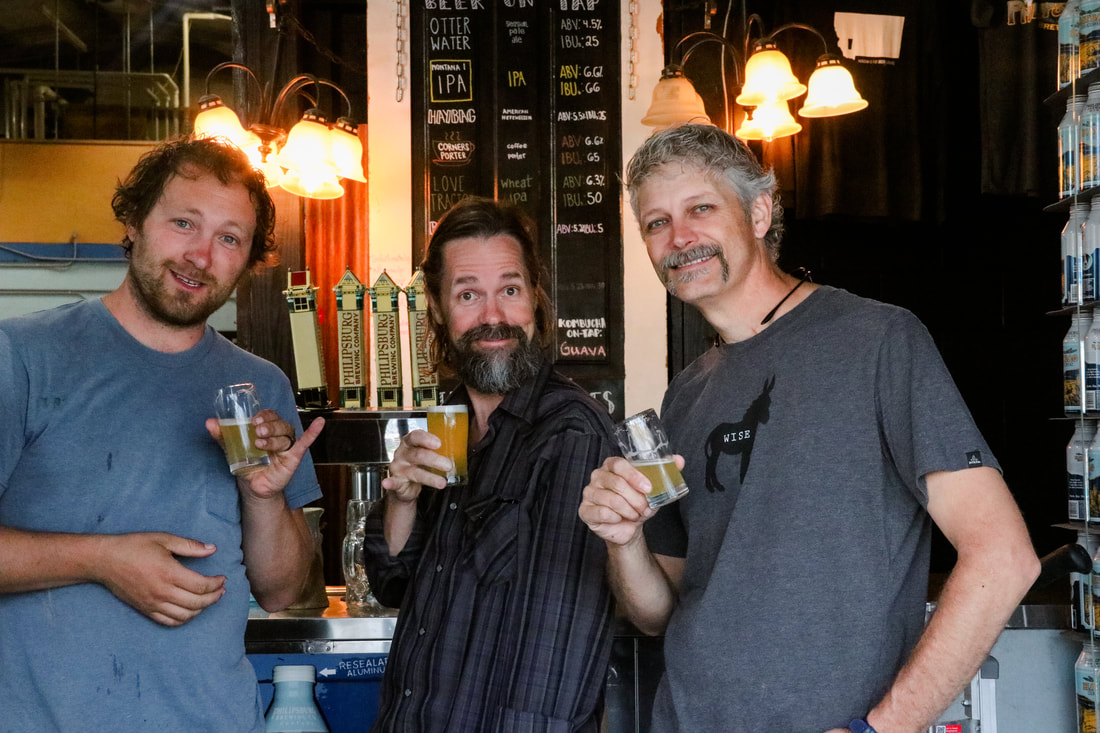

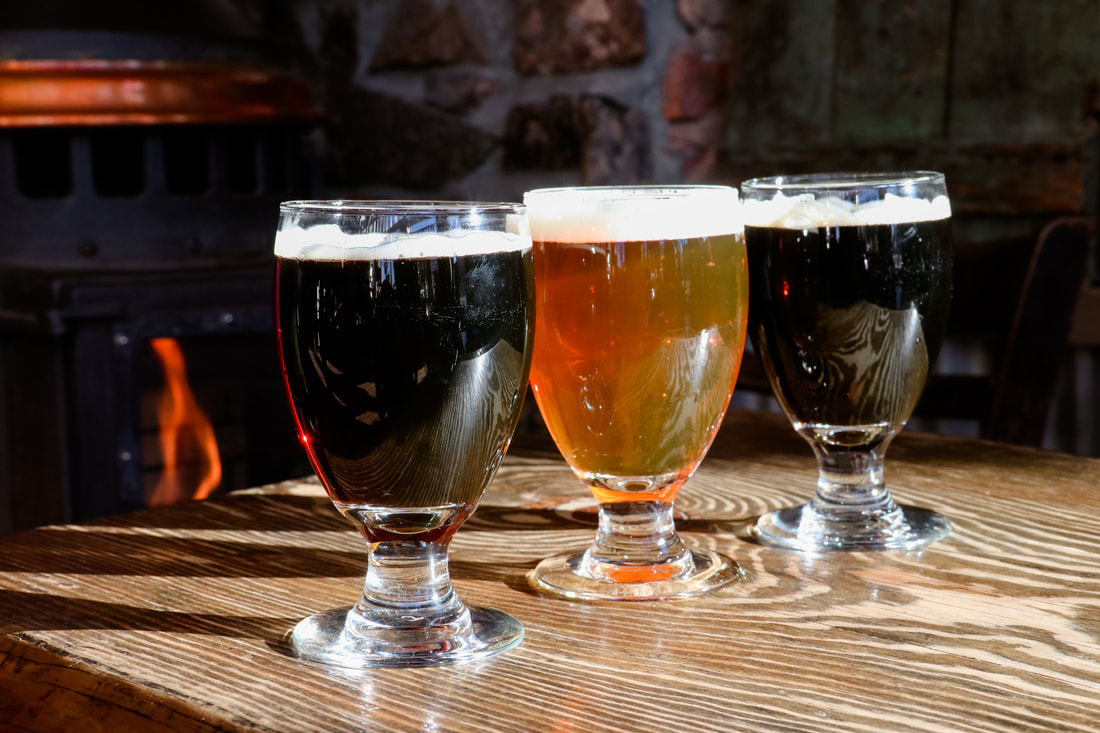
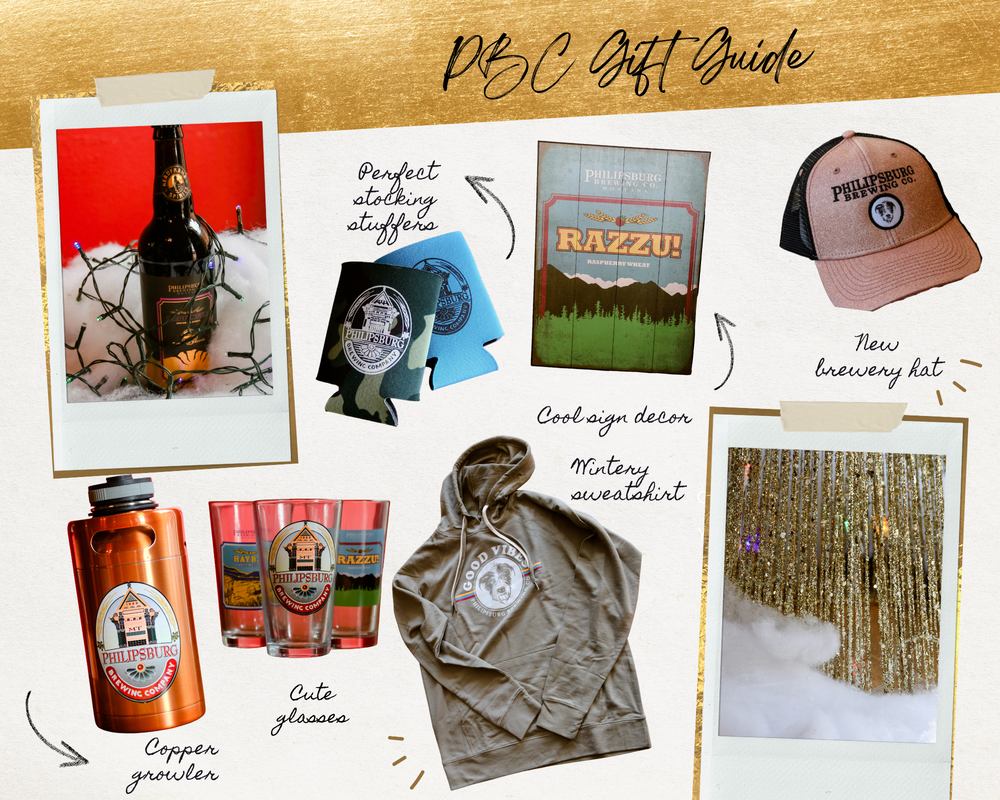


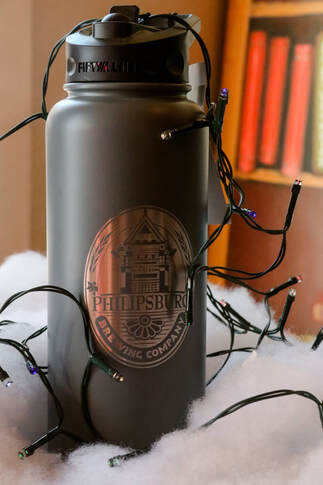



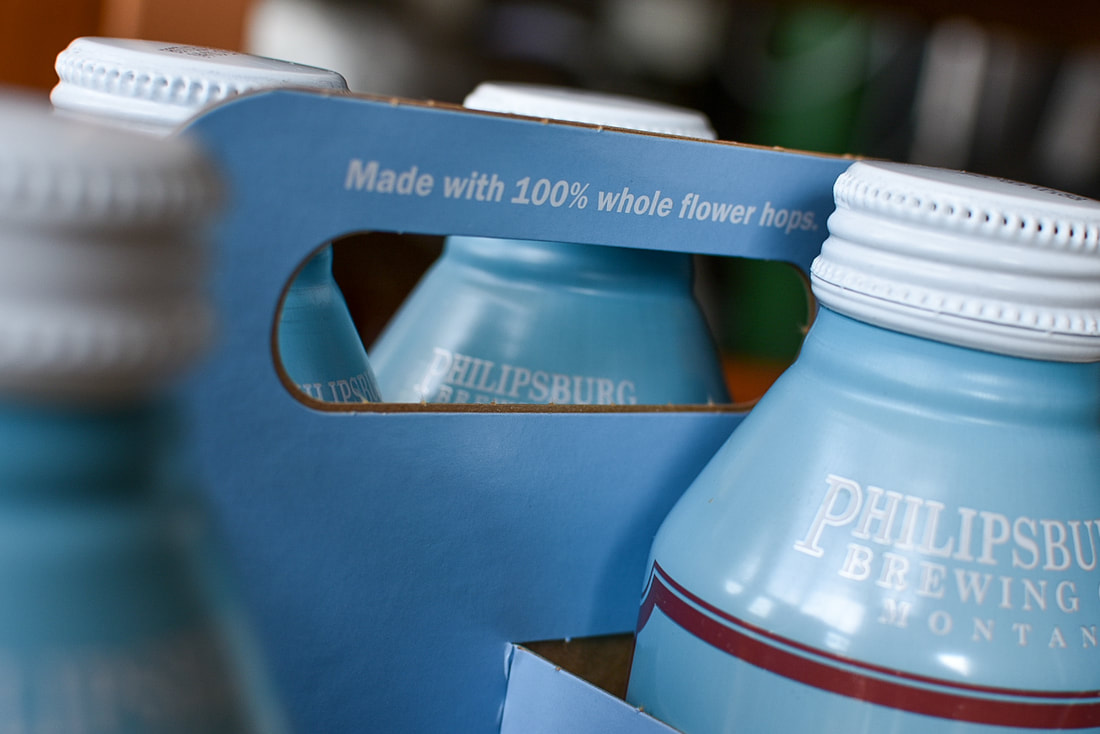
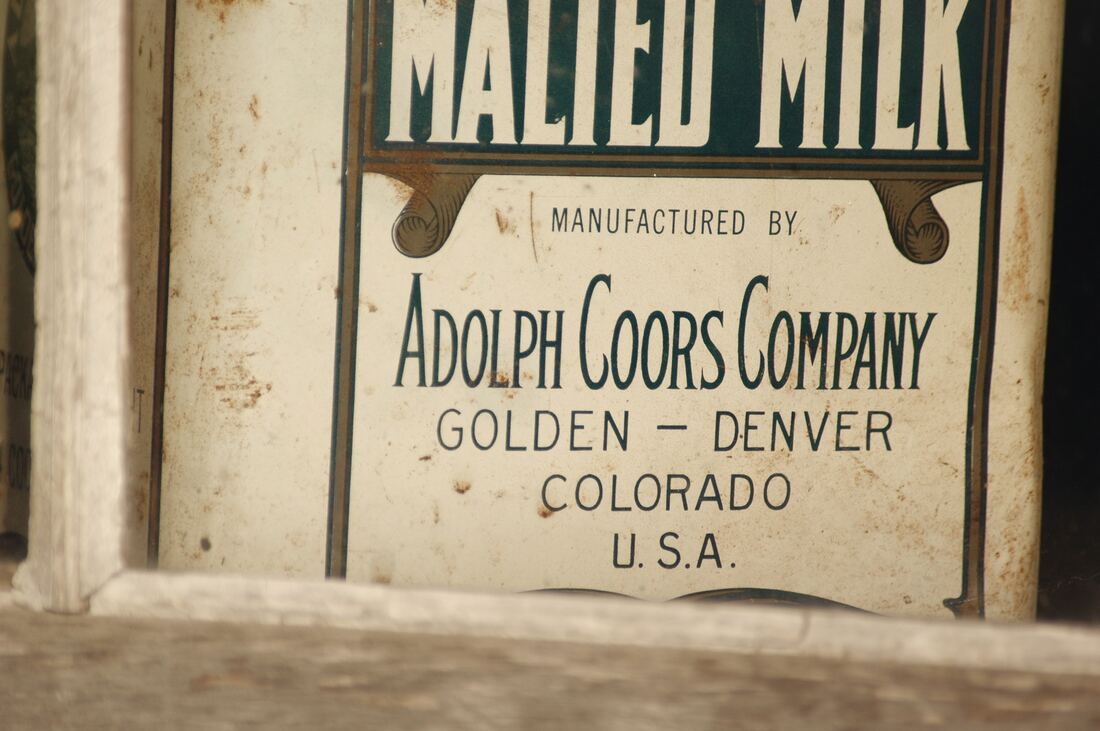




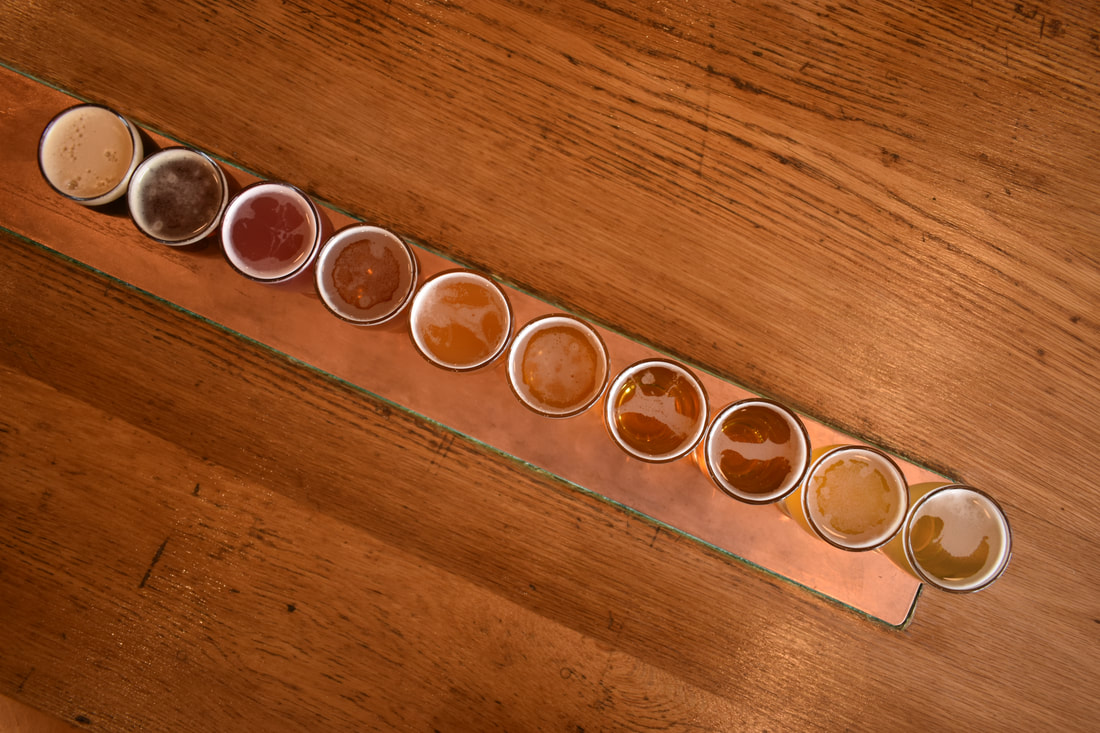













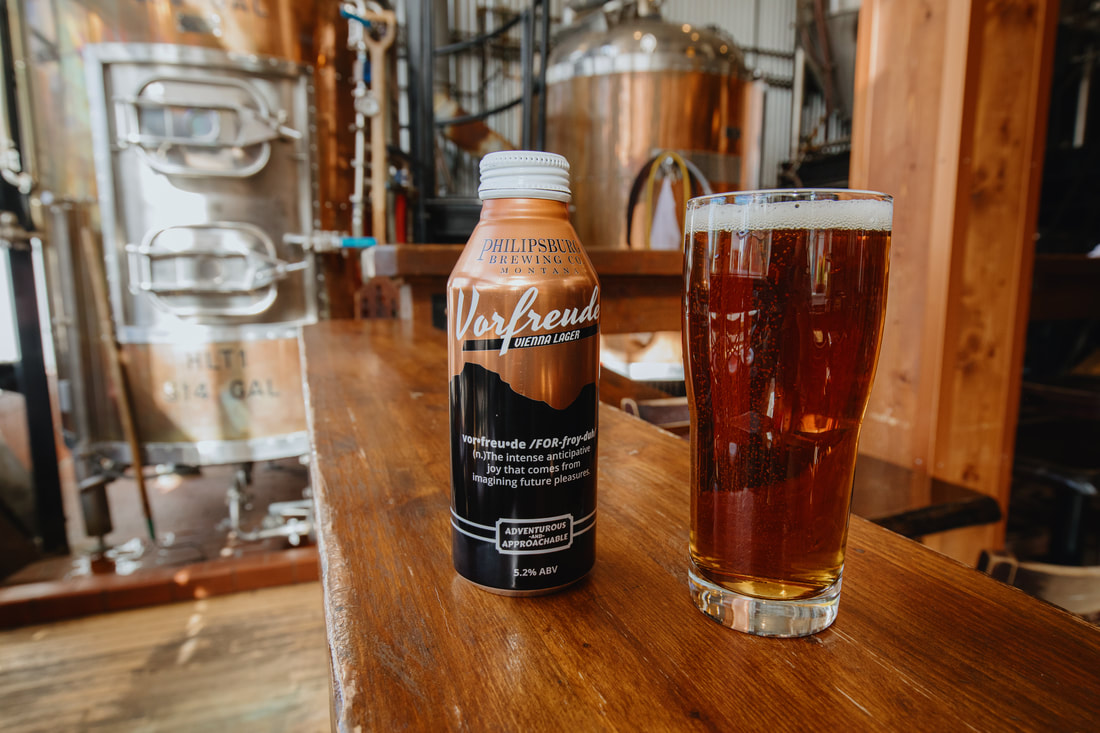

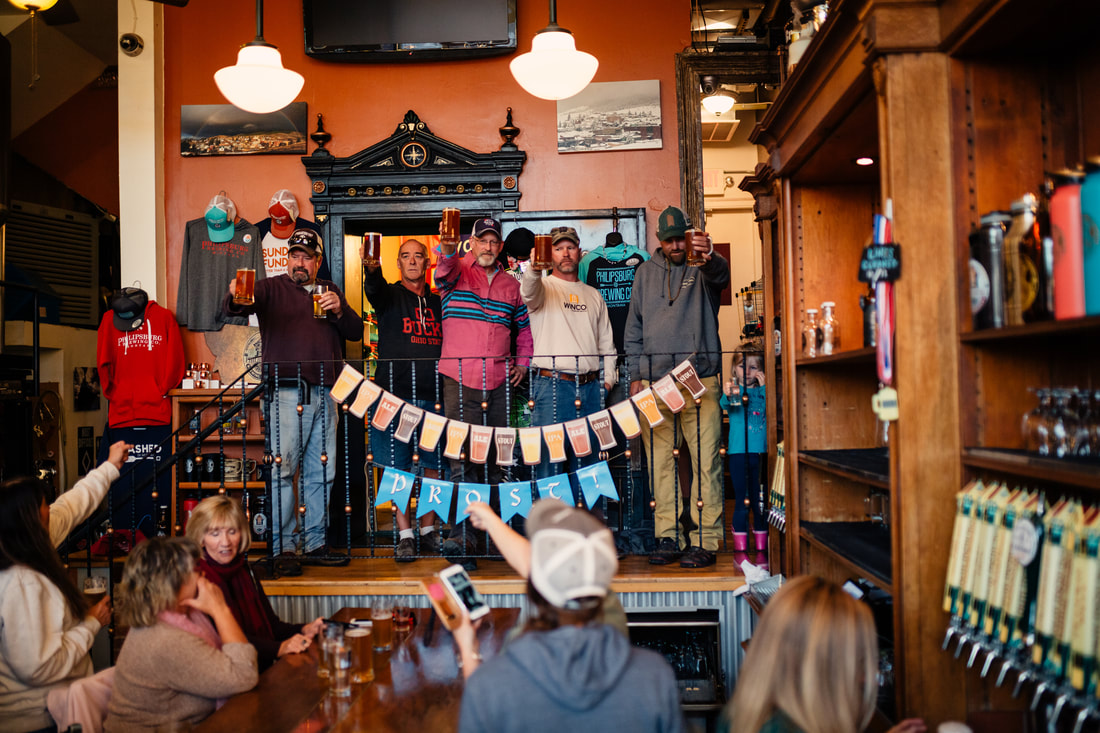
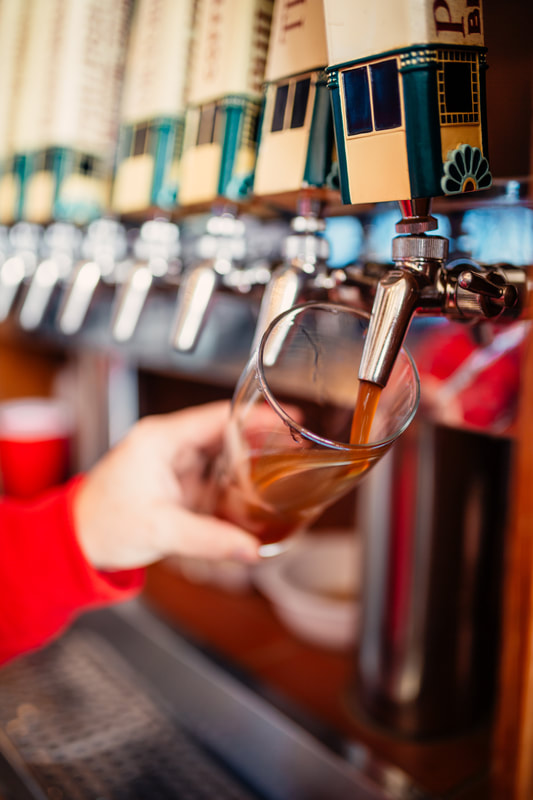
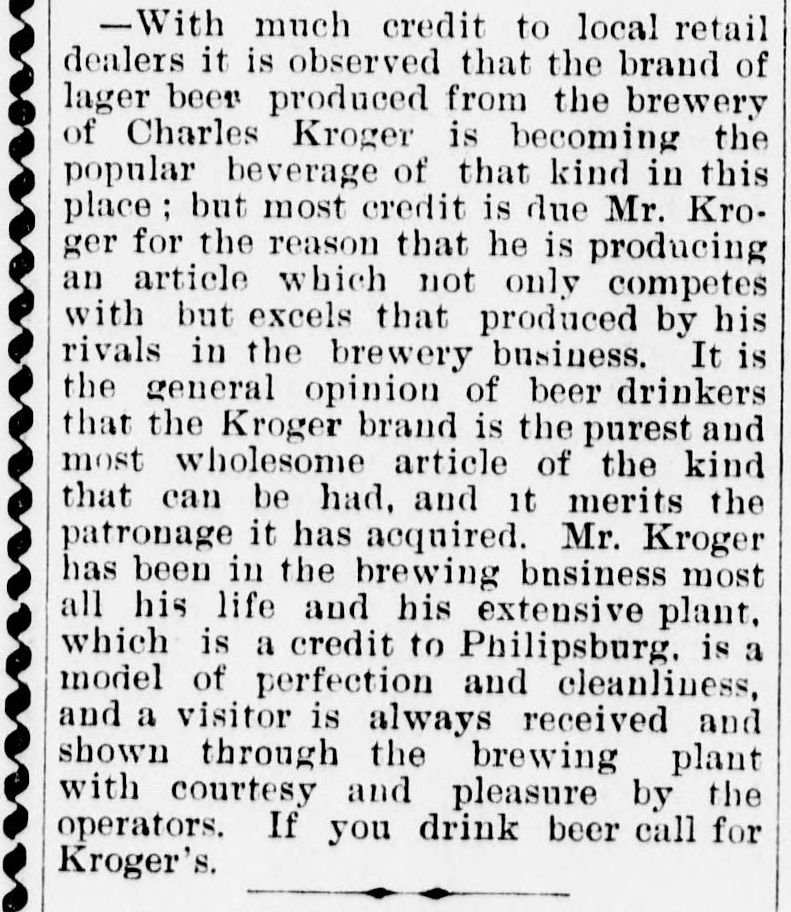







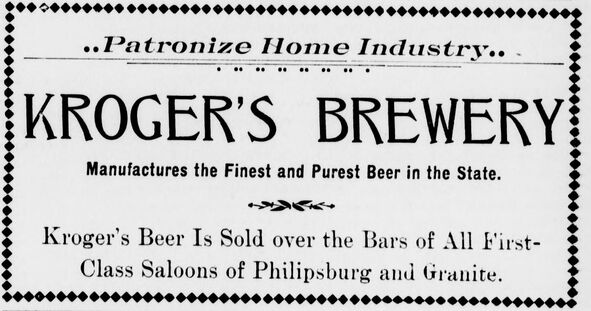
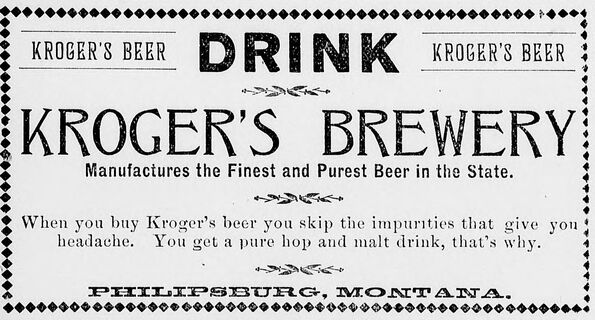










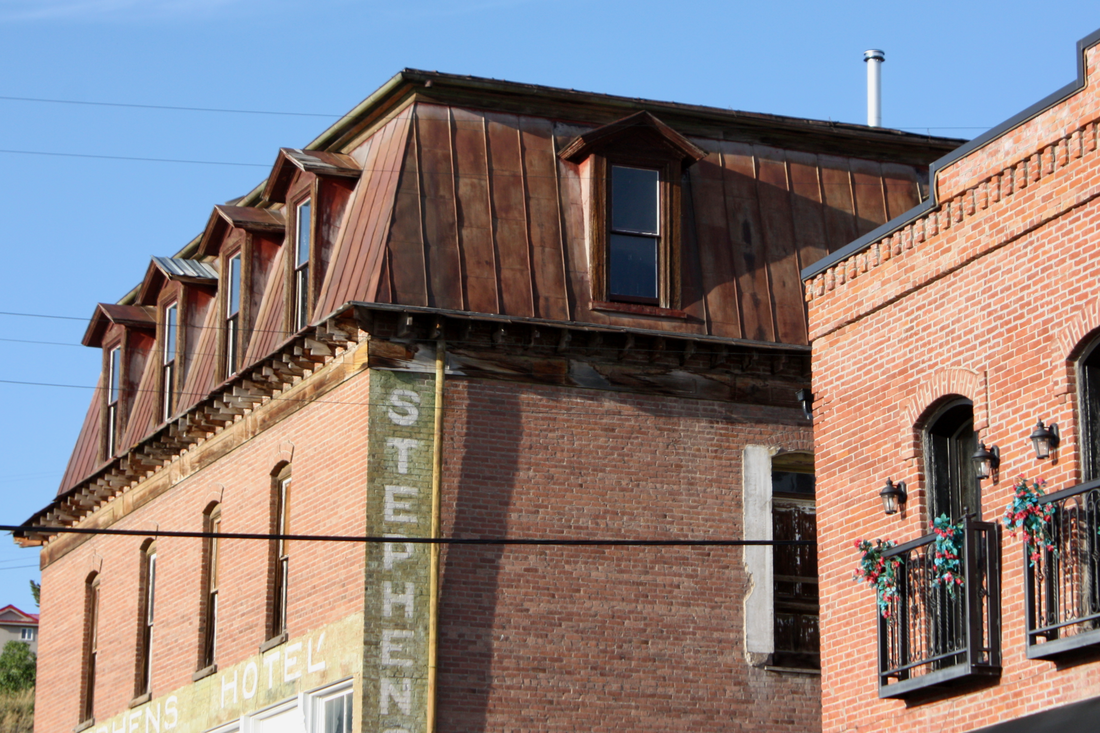


















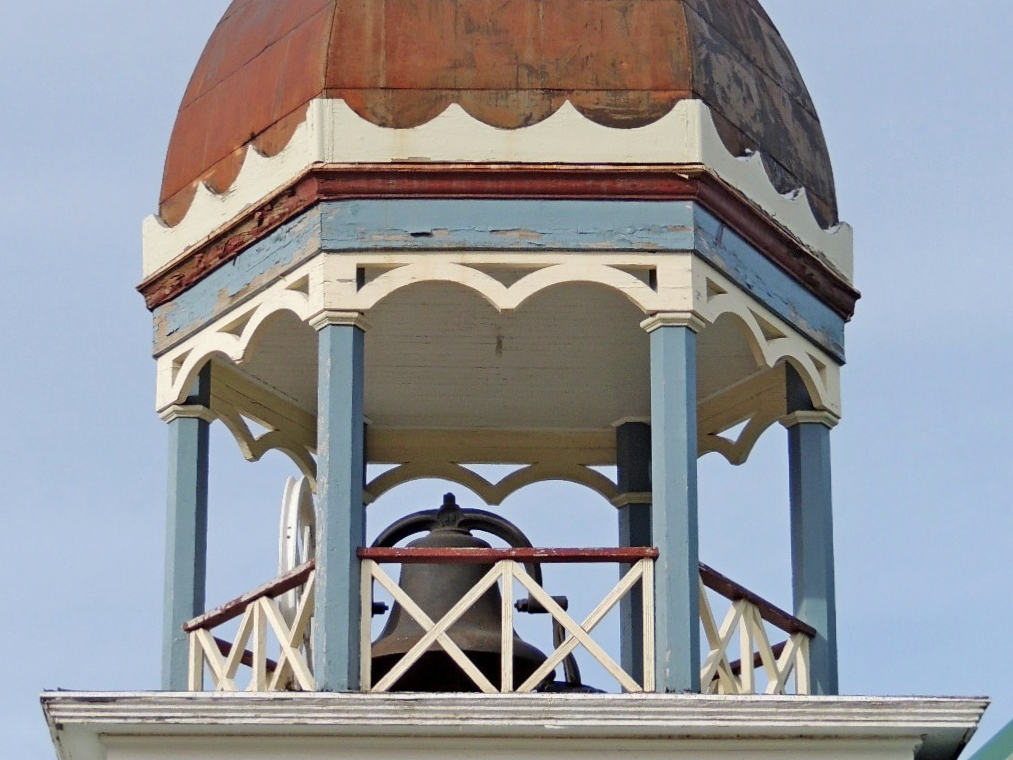





 RSS Feed
RSS Feed
